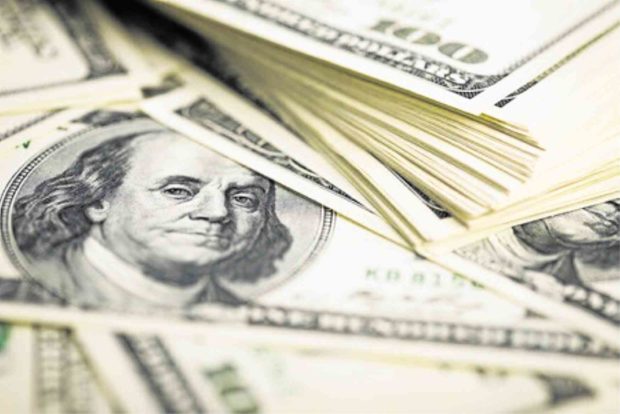
MANILA, Philippines – Net dollar inflows into the Philippine economy surged to their highest level in almost six years due to a trifecta of substantial remittances from overseas Filipino workers, and a surge of both short- and long-term investments into the country.
More importantly, the strong performance of the country’s balance of payments (BOP) — the aggregate net value of all transactions for goods and services with the rest of the world — in the first four months of the year marks the longest streak of foreign currency inflows outdoing outflows since 2014.
According to the Bangko Sentral ng Pilipinas, the BOP position for the January–April 2019 period posted a surplus of $4.27 billion. This represents a turnaround from the $1.5-billion BOP deficit recorded in the first four months of 2018.
“The surplus may be attributed partly to remittance inflows from overseas Filipinos and net inflows of foreign portfolio investments during the first quarter of the year, and net inflows of foreign direct investments in first two months of 2019,” the central bank said.
The turnaround is significant in light of the end-2018 record of a net outflow of $2.3 billion from the local economy caused the by country’s yawning trade gap with other nations as the Duterte administration buys more goods and services from overseas to accelerate its infrastructure buildup.
The last time the Philippines ended a year with a balance of payments surplus was the $5 billion in net inflows recorded in 2013.
For April alone, the country’s overall balance of payments position posted a surplus of $467 million, marking a reversal from the $270-million deficit recorded in the same month last year.
The central bank said that April inflows stemmed mainly from the BSP’s foreign exchange operations and income from its investments abroad, and the national government’s net foreign currency deposits. These were offset partially, however, by the payments made by the government for its foreign exchange obligations during the month in review.
ING Bank Manila senior economist Nicholas Mapa said the country would likely see months more of surpluses with the external position less vulnerable in 2019. Going forward, the Philippines will also see heavier reliance on the financial account even as the current account remains in deficit, he said.
“Meanwhile, we also expect the current account to narrow, on sustained growth in overseas Filipino remittances and business process outsourcing receipts which are seen to counter a slightly narrower trade deficit on the back of slowing imports with capital goods seeing only single-digit growth of late,” he added.
The latest BOP position reflected the final gross international reserves level of $83.88 billion as of end-April 2019. At this level, the GIR is equivalent to 7.4 months’ worth of imports of goods and payments of services and primary income. It is also equal to 5 times the country’s short-term external debt based on original maturity and 3.5 times based on residual maturity. (Editor: Abe Cerojano)